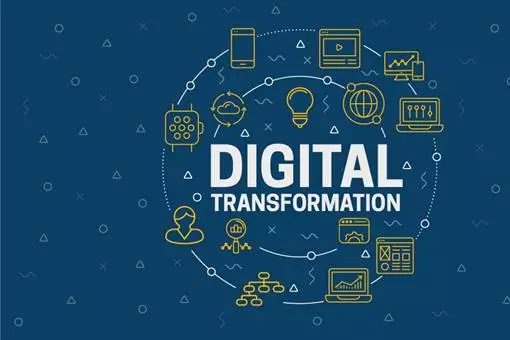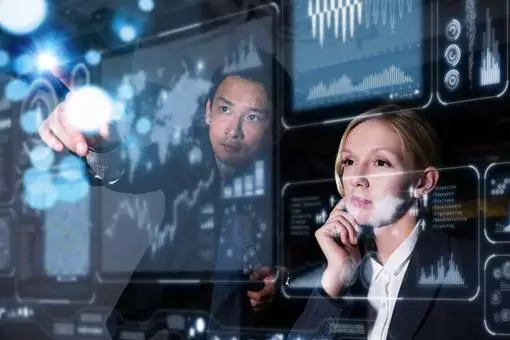The future of work: what can we expect?
- 13th April 2015
- Written by Hari Srinivasan
- Innovation & Technology

What will the future hold for the way in which we work?
The expected output of work, the dynamics of an office environment, and the technology we utilise are a variety of variables that could very well dictate the way we work in the future.
Companies’ expectations of their workforce shaped the current typical office role that many of us know, and most have not seen any significant redesigns or updates since the industrial revolution.
It’s quite surprising, as the tools with which we work have undergone dramatic revolutions over the past few decades. However, an average office space is largely unchanged and the structure of organisations remains similar to those that existed centuries ago.
Evolution of the ‘office culture’
Despite these startling similarities, the landscape of work in the future could be in for some serious shakeups. Computers are becoming increasingly connected, algorithms are growing more complex and better able to perform a number of tasks, and technology is shrinking while encompassing a wider web all at the same time.
Professor Maurits van Rooijen, CEO and Rector of London School of Business and Finance (LSBF), said: “The changing office culture is primarily about how we work with our staff and what we expect from our staff. It is about giving staff more independence, so they can do the required work whenever and wherever.”
He added: “Whether at home or on a beach on the other side of the world or in the middle of the night, it does not matter as long as they are able to produce the agreed results. So the focus has to move from hours behind the desk to quantifiable, tangible, hard output.”
The Internet of Things
Every company these days uses the internet in a number of ways. Some merely send emails while others have set up an online presence, the digital world is inescapable in the modern era. However, even the way we use the internet is ready to change.
Recent research from BCSG revealed that 72 per cent of small and medium-sized enterprises (SMEs) plan to embrace the cloud by 2017. But even this move will not be the real game changer.
Further plans to invest in the Internet of Things (IoT) will reshape the way we work and alter the composition of workforces, especially if it is implemented industry-wide. It would require the cooperation and involvement of businesses with the government to identify areas which need improving before the adoption of the IoT can be fully realised.
A report from UK communications regulator Ofcom suggested that the economy could benefit from the adoption of the IoT at the industrial level, which it forecasts would add around £348 billion to GDP by 2030.
The overarching goal of the plan is to further the contributions to big data, where the volume and variety of incoming raw data could be used by researchers to analyse trends and uncover large hidden values that can be improved upon.
Big data and its applications will be the real benefit of the IoT, if it’s utilised correctly. Sectors that could be enhanced include healthcare, transport and energy. But overall productivity and growth will accelerate due to the IoT over the next decade, according to Accenture, who estimates it could add $14.2 trillion to the global economy by 2030.
The rise of algorithms
Robots have already drastically changed the manufacturing line and their infiltration into the workforce will remain a trend in years to come. The only difference this time around is that they might be entirely made up of software instead of having a physical presence.
Speaking at a QUT Future of Work conference, Professor Michael Osborne, the renowned co-author of a study that predicted 47 per cent of US jobs could be usurped by computers over the next couple of decades, said:
"Machine learning is the study of algorithms that can learn and act, and algorithms are increasingly a cheaper alternative to human work.
"They are replacing some of the most quintessential human activities," he added.
With the development of better deep-learning algorithms we could see dramatic changes to the way we work. Not only will they create perfect voice recognition software, but these lines of computer code will also automate a variety of tasks that currently require human input.
Artificial intelligence may still be some way off, but the algorithms that researchers are working on are powering the software revolution that could end up replacing humans in a number of roles. Big data also plays its own part in the rise of automations.
The arrival of big data was "fundamentally transformational for society", according to Professor Osborne. This will be partly due to the sheer volume of data available for algorithms to sift through, which could be used to teach algorithms certain cultural cues that humans pick up throughout their lives.
Despite the rise of algorithms and automations, there remain three key bottlenecks that will ensure humans are still needed. These bottlenecks include creativity, social intelligence, and perception.
The future of work is often hard to predict: as Professor Osborne noted, who in the year 2000 could have predicted that Zumba instructors would have been one of the fastest growing occupations in 2014?
Automations and algorithms that can pass as humans are still a long way off, but the number of roles they can perform is slowly increasing.
Other News
How Leadership Shapes Digital Transformation
Being digitally driven is a necessity right now for every business, but just acquiring new technology isn’t enough as implementation…
Top 3 Big Data Trends in 2020
Data and technology have made their way into our lives and have forever changed the way we use the internet.…
Technology failures changing consumer attitudes in banking, study shows
A study from data analytics firm Consumer Intelligence has highlighted the impact of technology failures in banking, with more than…


